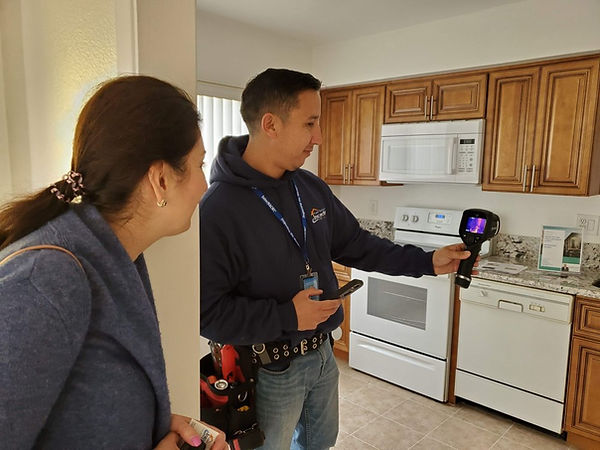619-323-3363

What is a home inspection?
Focus Home Inspection - Same peace of mind, one inspection at a time
A home inspection is a detailed examination of a property to identify potential problems. Conducted by a professional inspector, its purpose is to find issues that could impact the health and safety of residents or require expensive repairs. The inspection looks at various components of the home, including the roof, foundation, plumbing, electrical wiring, and heating systems. Advanced technology like drones and thermal imaging may be used to find hidden problems. The inspector's findings are compiled into a comprehensive, easy-to-read report that details every issue, from minor to significant, with accompanying images for reference.
A home inspection is invaluable for both buyers and sellers. For buyers, it provides a thorough understanding of the property's condition, helping them make an informed purchasing decision. The report can also be used to negotiate repairs or a lower price. For sellers, a pre-listing inspection can give them a realistic idea of their home's condition, allowing them to make any necessary repairs beforehand. This can provide added confidence to potential buyers and may help the home sell faster. After the inspection, the inspector will walk through the home with you and your agent to explain the general condition and discuss any major issues that need immediate attention, as well as items that may require ongoing maintenance.
A condo inspection primarily focuses on the interior of the individual unit, since the building's exterior, roof, foundation, and common areas are typically maintained by a homeowners' association (HOA). The inspector will examine the unit's electrical, plumbing, and HVAC systems, as well as appliances, windows, and doors within the unit's boundaries. The inspector may also review HOA documents to understand the financial health of the association and any planned or deferred maintenance projects, as these can lead to special assessments for the owner. This differs from a single-family home inspection, which includes a comprehensive assessment of the entire property, from the roof and foundation to the land and all exterior components.
A townhouse inspection is often very similar to a single-family home inspection, but with a few key differences based on the ownership structure. Townhomes are often part of an association where some exterior components, like the roof or siding, are shared responsibilities. Therefore, a thorough inspection will not only assess the interior of the unit but also the condition of the shared exterior and common areas. While the homeowner is responsible for their own unit, the financial burden of major exterior repairs on shared components can fall on all owners through an assessment. An inspector will check for defects on the roof, exterior walls, and any shared decks, as these could lead to unexpected and costly repairs in the future.
A mobile home inspection differs from a single-family home inspection by focusing on the unique construction and systems of a factory-built dwelling. While a single-family home inspector evaluates a structure built on a permanent foundation to a local building code, a mobile home inspector assesses a home built to the U.S. Department of Housing and Urban Development (HUD) Code. Key differences in a mobile home inspection include a detailed examination of the undercarriage, which often involves checking for issues with the steel frame, a plastic vapor barrier, and the home's support system, which typically consists of block piers and tie-downs. The inspector will also pay close attention to the skirting around the base of the home, which is vital for insulation and pest control. These components are not present in a standard single-family home, making the mobile home inspection a specialized process.
To prepare for a home inspection, it's best to ensure the inspector has clear and unobstructed access to all areas of the home, including the attic, basement, crawlspaces, and any built-in appliances. Clearing away clutter and moving furniture away from walls and access panels will make the process more efficient. It is also a good idea to have any known maintenance or repair records available for the inspector to review. Being present during the inspection can also be beneficial, as it allows you to ask questions and gain a first-hand understanding of the property's condition.
Let's Get Specific
Additional Links
Click the topics/links below to learn more about specific aspects of your home inspection

Modern, Mobile Friendly Reporting
Immediate report publication gets you off to the races faster
We commit to immediate reporting. All observations are documented in real time ensuring that your report is complete and ready for review at the end of the inspection.
Web based HTML reports with the option to download to PDF
You and your client have the option to view the report online in full resolution and detail, or to download the report to PDF for an old fashioned kinetic approach to study and ease of sharing.
High resolution images and video reporting
Photos and video ensure all parties involved have a firm grasp on the reality of the situation. Be sure to tell us if your client is out of town so that your inspector can make video observation on important and often confusing items.
Informative observations illustrate and educate
Our formula for reporting is simple: the observation, the implication, and our recommendation. While other companies look for shortcuts in their reporting by employing "such as but not limited to" comments, we use specific comments for each defect observed. This means that you and your client learn about the reality of the defect observed and what your next steps are.